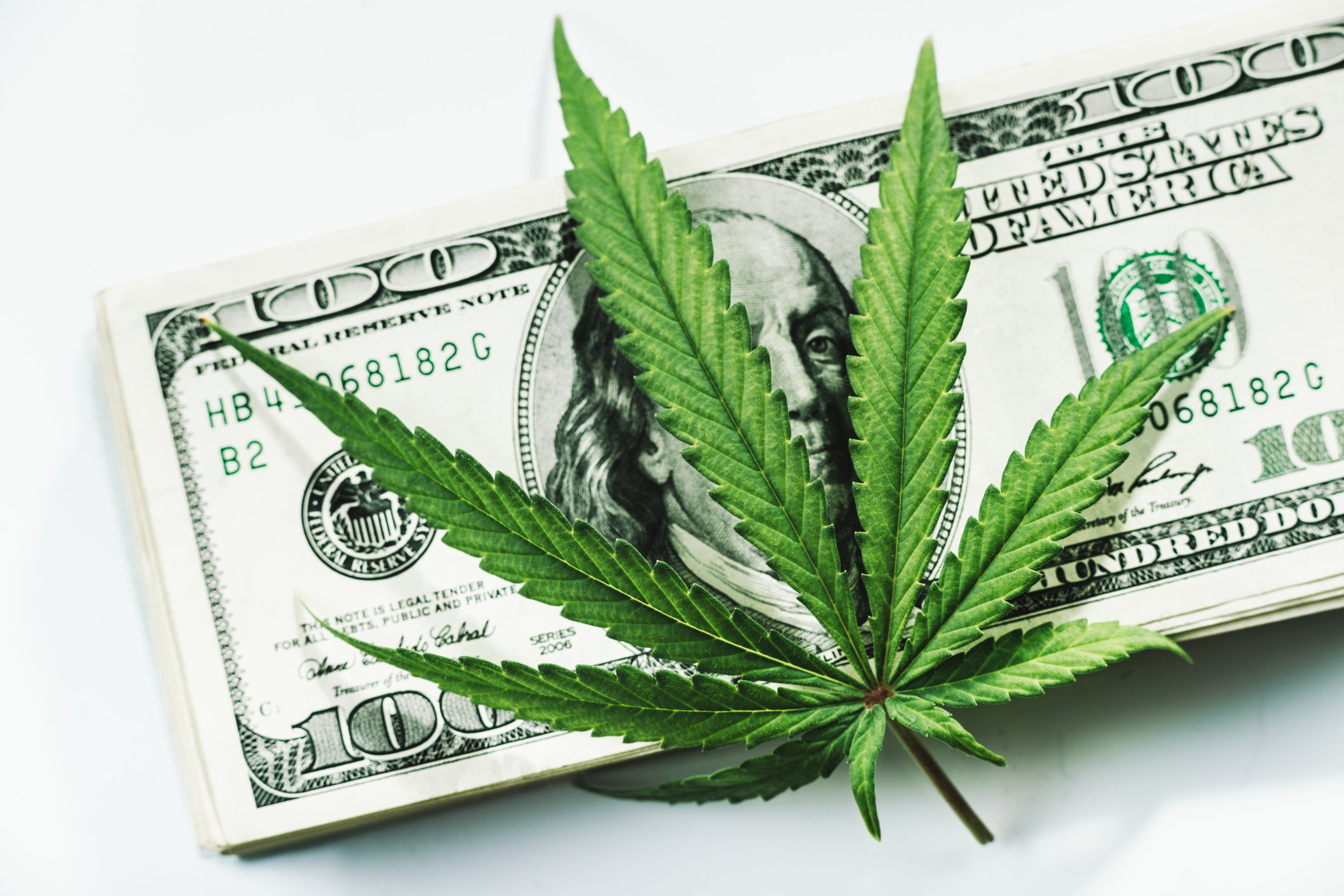There's a very real possibility that the legal marijuana industry will be the greatest growth story of our generation. According to ArcView Market Research and BDS Analytics, the green rush produced $5.4 billion in worldwide legal sales in 2015. But based on estimates from Wall Street investment bank Cowen Group, sales could soar to $75 billion by 2030. Over 15 years, that's a compound annual growth rate of just over 19%.
Even the green rush has risks
Unfortunately, even the greatest growth stories come with some pretty serious risks and volatility.

Image source: Getty Images.
For example, despite becoming the first industrialized country to give recreational marijuana the green light in October, Canada has been contending with a persistent shortage of dried flower since dispensary doors opened. Regulatory red tape, in the form of a monstrous backlog of cultivation and sales applications with Health Canada, and a shortage of compliant packaging have left supply well short of consumer demand. In fact, cannabis store revenue in Canada fell 13% in February from what was registered in the month of December.
Adequate financing options have also created risks in some parts of the market. Even with traditional banking services now an option in Canada, many pot stocks continue issuing common stock to facilitate acquisitions or raise capital. Although secondary stock offerings have worked to raise capital, they've had the unintended consequence of diluting existing shareholders and making future profitability per share all the tougher.
And, of course, there's no overlooking the cold, hard fact that marijuana stocks, for the most part, aren't profitable. Without the benefit of derivative adjustments, one-time gains from asset dispositions, investment revaluations, or fair-value adjustments on biological assets, no Canadian pot growers are profitable on an operating basis. That makes pot stock valuations even more difficult to stomach.

Image source: Getty Images.
The popularity of marijuana ETFs is budding
Given these risks, perhaps it's no surprise that marijuana-focused exchange-traded funds (ETFs) have grown in popularity with investors.
The very first pot-based ETF debuted a little more than two years ago: the Horizons Marijuana Life Sciences ETF (HMLSF +14.00%). Today, the Horizons Marijuana Life Sciences ETF holds nearly five dozen pot stocks with various weightings, and it has about 934 million Canadian dollars in net assets.
Though the Horizons Marijuana Life Sciences ETF was the first to market, it's the ETFMG Alternative Harvest ETF (MJ 0.54%) that's the net asset kingpin at $1.26 billion (U.S.). With cannabis stocks rapidly gaining popularity in 2017, the Tierra XP Latin America Real Estate ETF, which was started in December 2015, had its underlying index switched to the Prime Alternative Harvest Index, and its focus shifted to marijuana, related pharmaceuticals, and tobacco. In this manner, many of the paperwork hurdles in bringing a brand-new ETF to market were avoided. Today, the ETFMG Alternative Harvest ETF owns 38 different equities of various weightings.
These popular ETFs both have reasonably low net expense ratios of 0.75%. While this might not seem low compared to the microscopic fees of many index funds, it's reasonable considering the high portfolio turnover expected in such a rapidly evolving industry.
By purchasing either of these ETFs, investors are aiming to spread out their risk and ensure that their money won't go up in smoke overnight if one or two marijuana stocks have a bad day.

Image source: Getty Images.
So, about that diversification...
However, there's a pretty sad, but true, fact about the Horizons Marijuana Life Sciences ETF and ETFMG Alternative Harvest ETF. Namely, neither is particularly well diversified.
The idea of an exchange-traded fund is that it holds a basket of stocks providing diversification for investors. But a quick look at both funds shows that they are pretty heavily concentrated in only a select few marijuana stocks.
The Horizons Marijuana Life Sciences ETF might appear well diversified with 58 different holdings, as of May 10, but the fund had 72.26% of its net assets tied up in its top 10 holdings, leaving very little to go around for the other four dozen marijuana stocks it owns. Its top holdings are Canopy Growth (CGC +0.85%) with a 12.83% share and Aurora Cannabis (ACB +0.24%) at 10.84%.
To some extent, this weighting does make sense given that Canopy and Aurora are, by far, the largest marijuana stocks by market cap, and they should easily lead Canada in peak production, with Aurora likely yielding more than 700,000 kilos a year, and Canopy Growth easily clearing 500,000 kilos annually, when operating at peak capacity. But at the same time, the Horizons Marijuana Life Sciences ETF piles into growers while paying little attention to much else. More than 60% of the fund is invested in pure-play growers, with eight of the top 10 holdings (all growers) equaling nearly 55% of net assets.

Image source: Getty Images.
The ETFMG Alternative Harvest ETF isn't much of an improvement, with more than 58% of its net assets invested into its top 10 holdings, eight of which are, again, pure-play cannabis growers.
But what's particularly strange about this fund is that market cap bears little meaning. Canopy Growth is only the fifth-largest holding by weighting, with Aurora Cannabis first. Meanwhile, small-cap plays such as HEXO, The Green Organic Dutchman, Corbus Pharmaceuticals, and OrganiGram Holdings are among the ETFs top 10 holdings. There's certainly better diversity with the ETFMG Alternative Harvest ETF given its inclusion of tobacco and pharmaceutical companies, but even then, this fund still places just over 51% of its net assets into pure-play growers; nearly 45% of that is in only eight stocks.
To be clear, this doesn't mean these marijuana ETFs won't be successful over the long run. But it does suggest that marijuana stock investors angling for diversity and less volatility might not receive the desired results with either of these cannabis ETFs.









